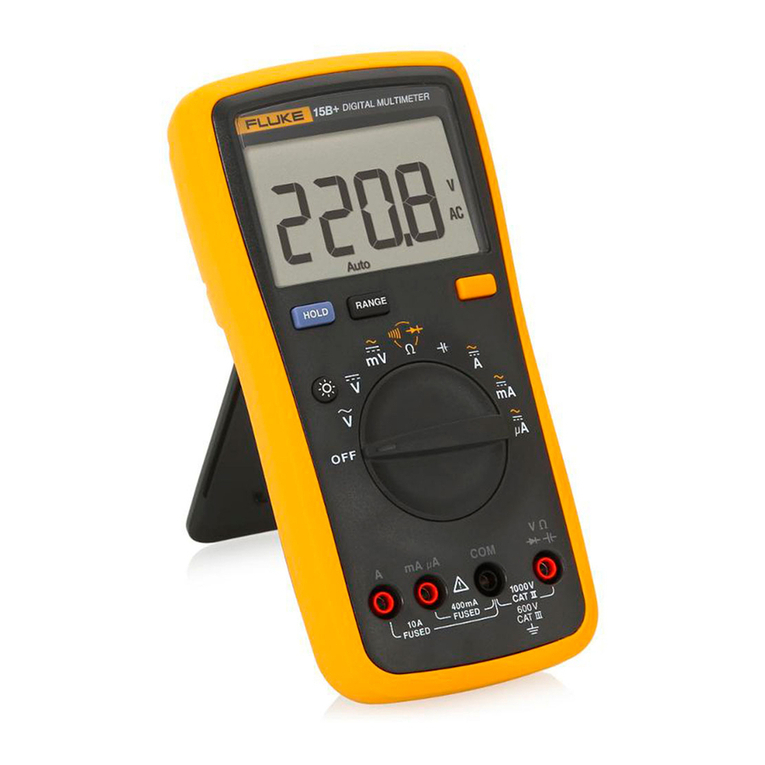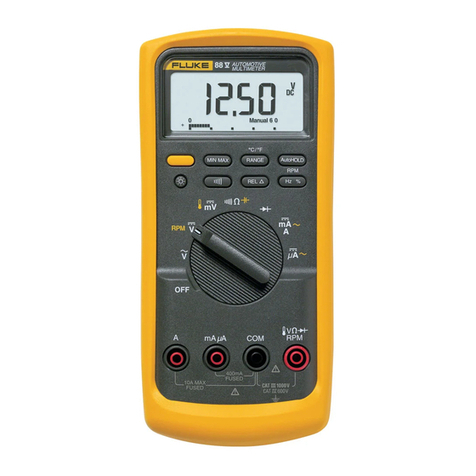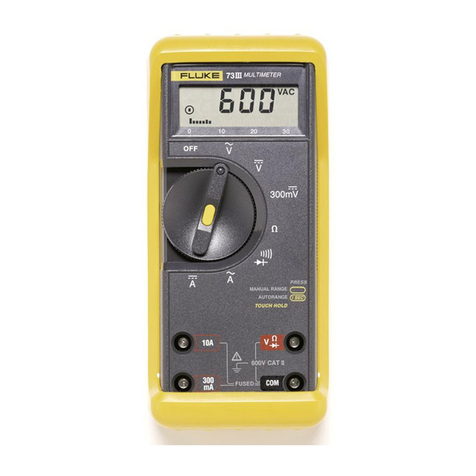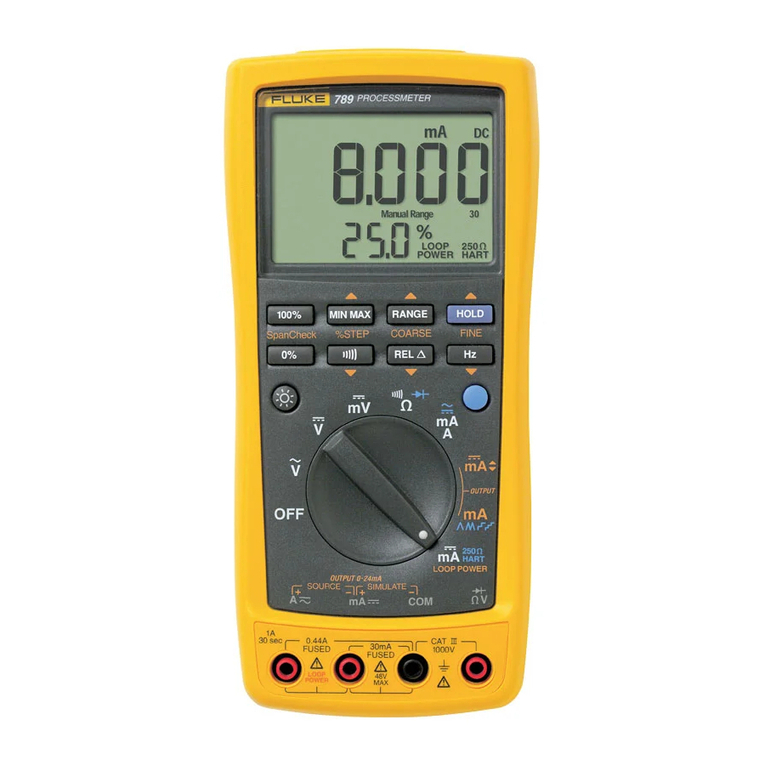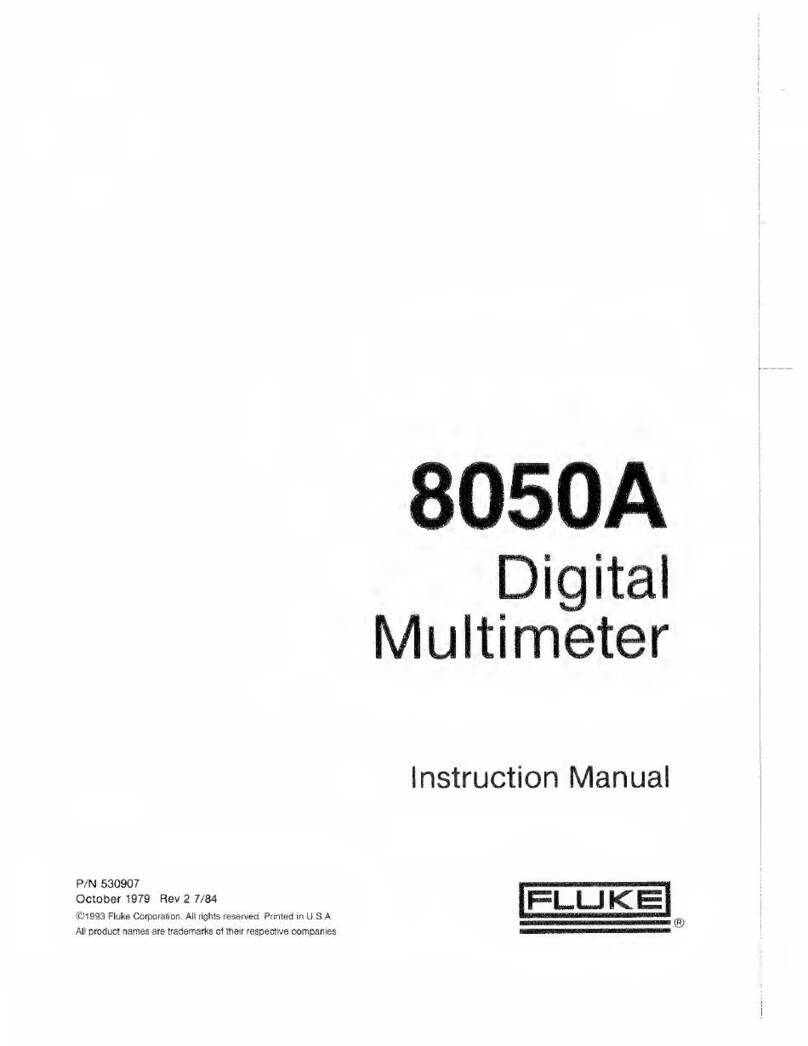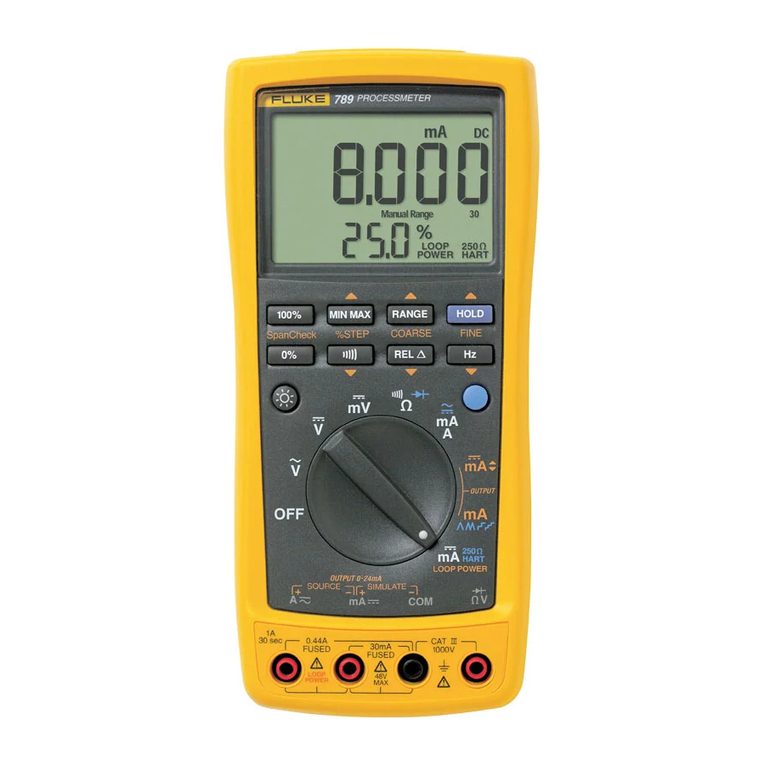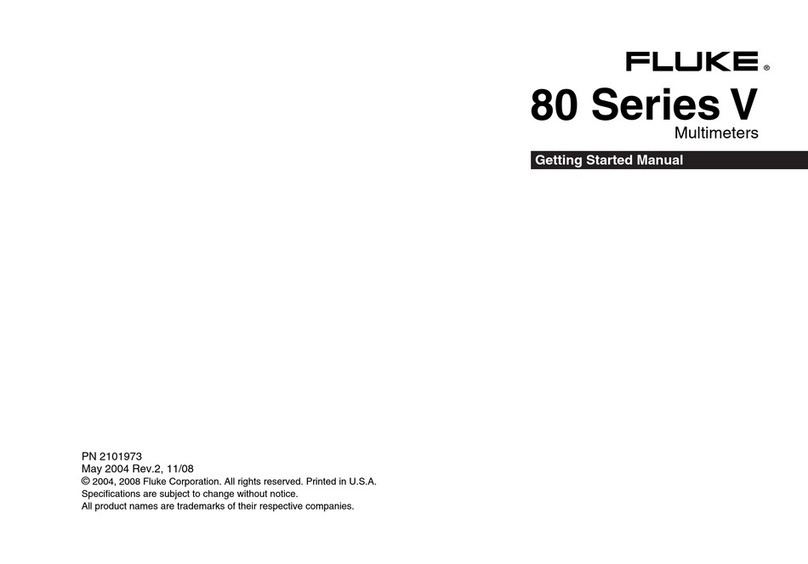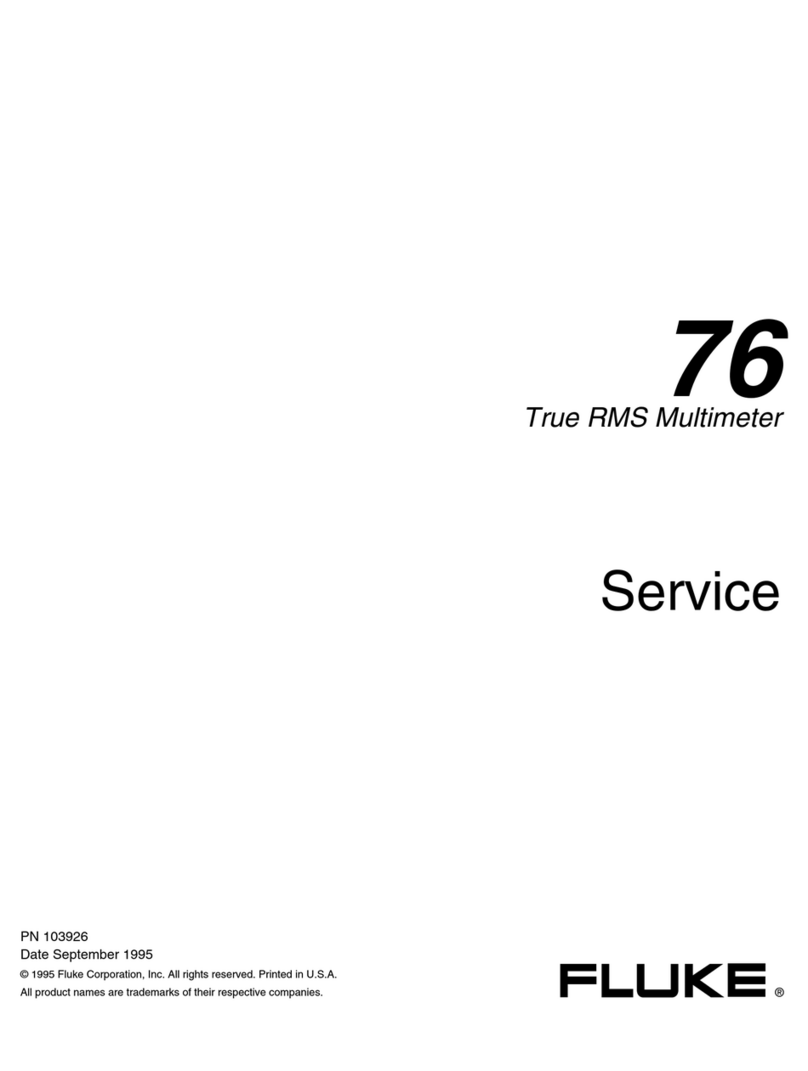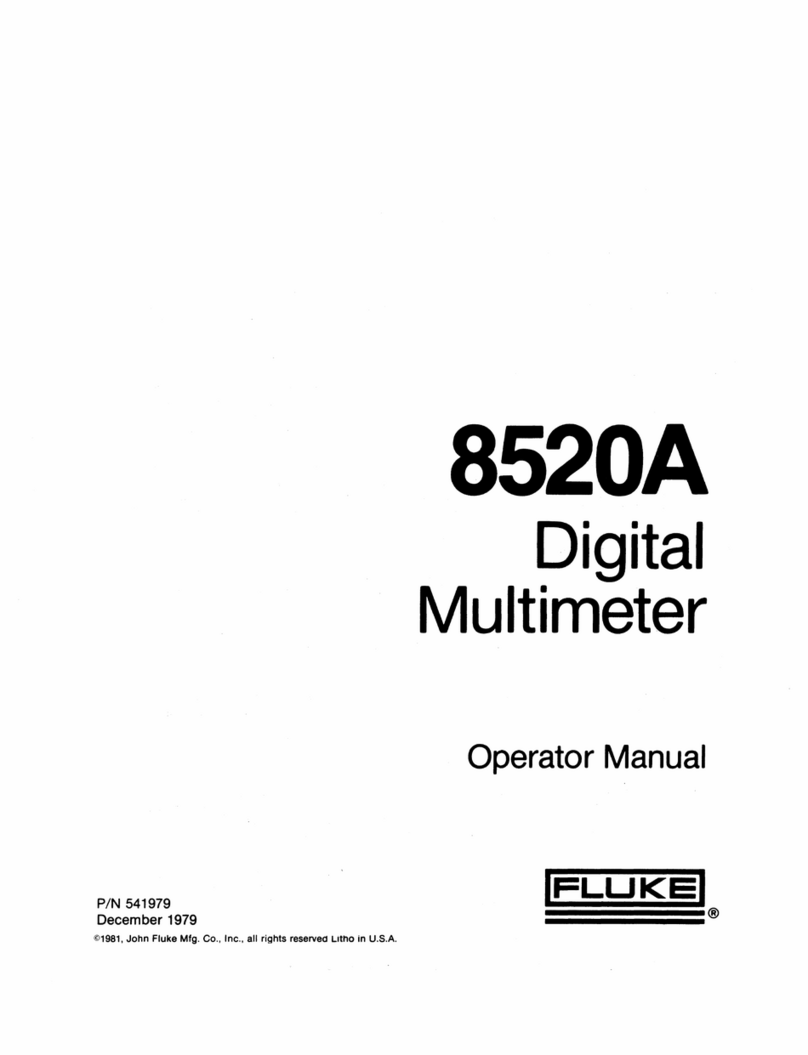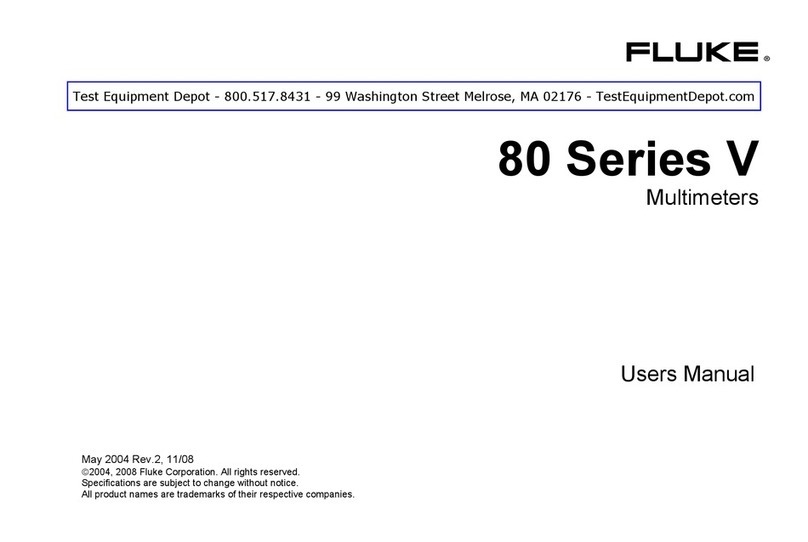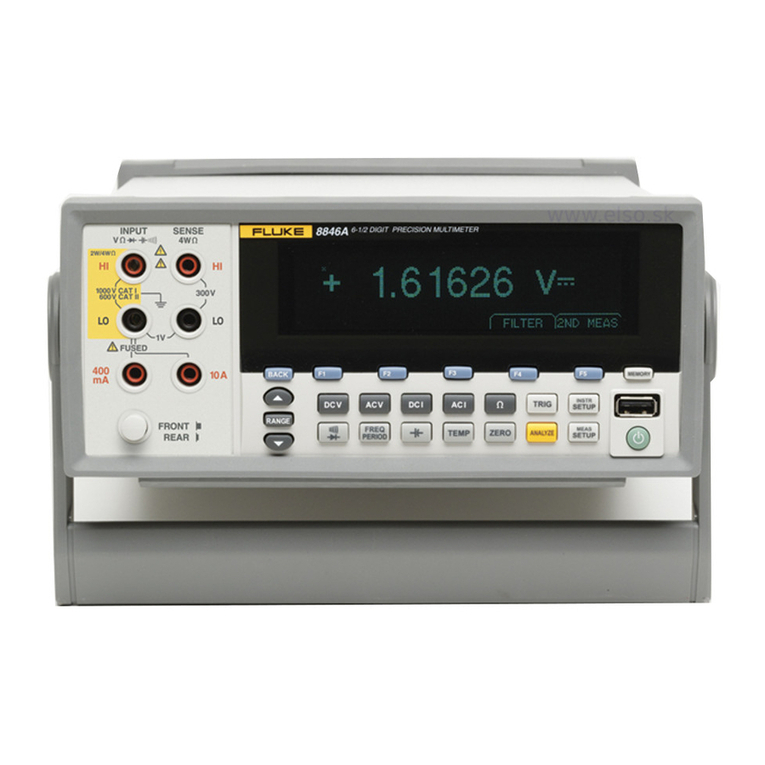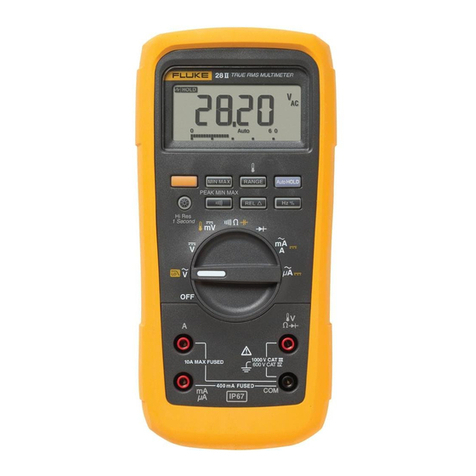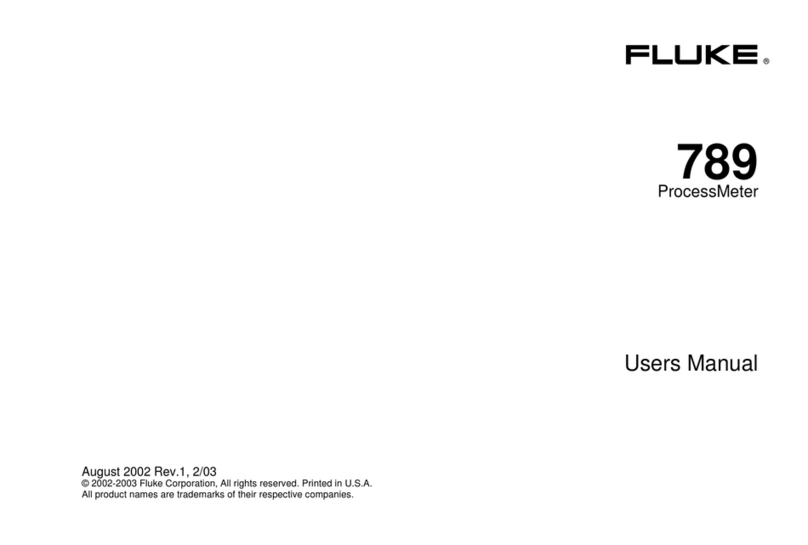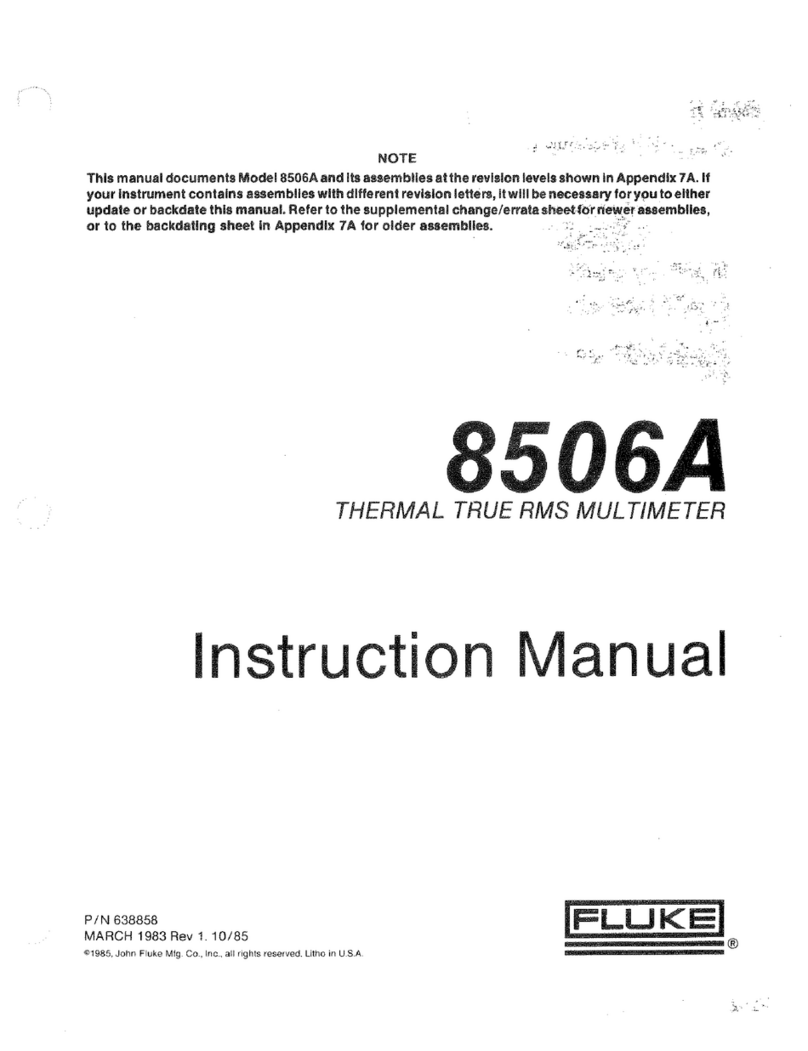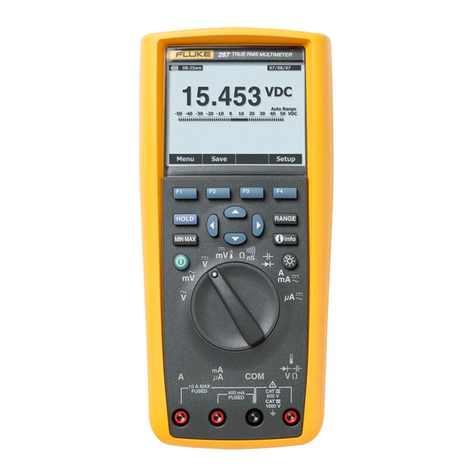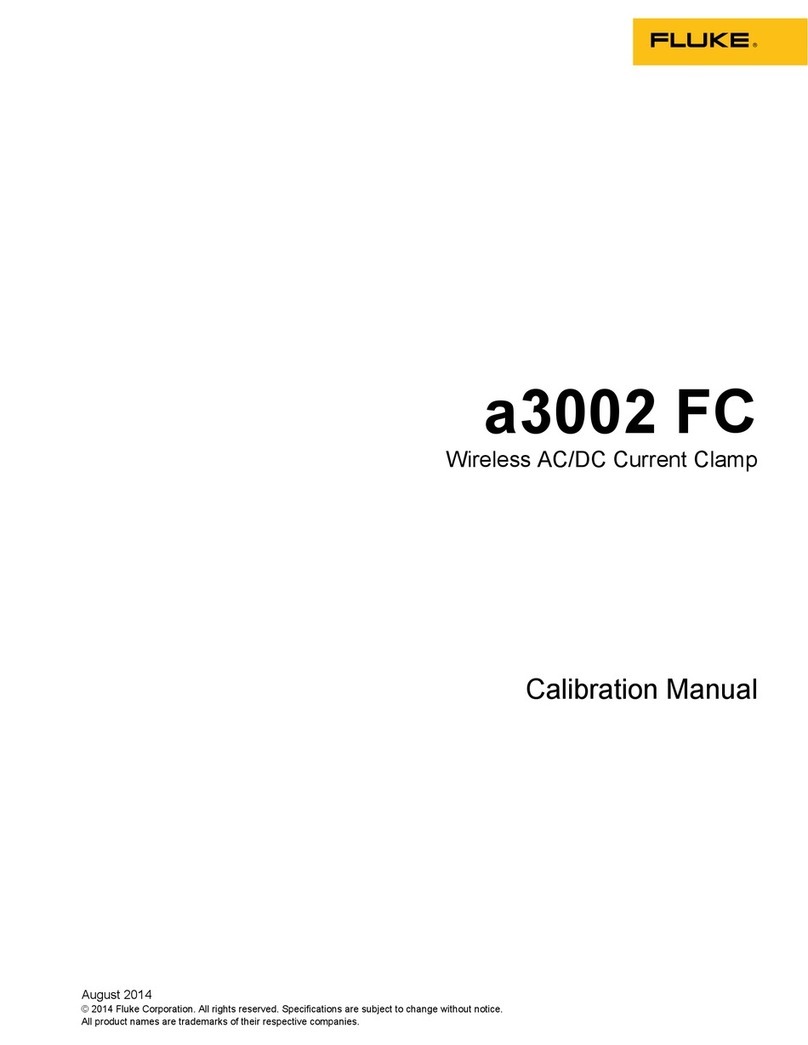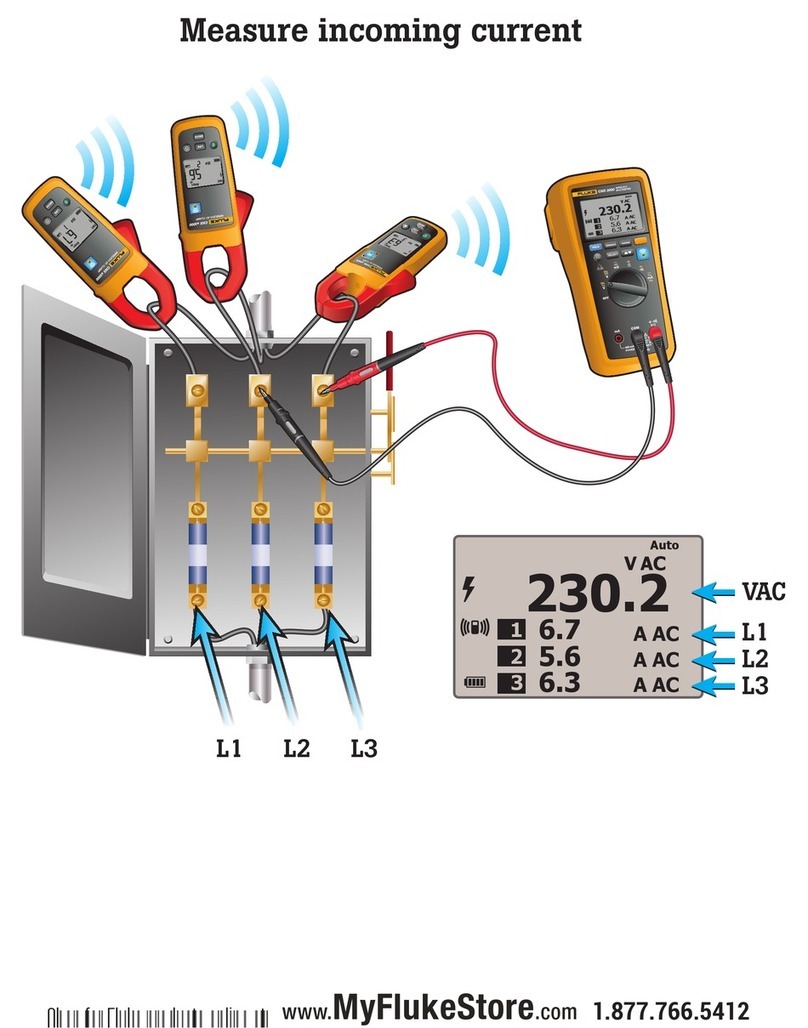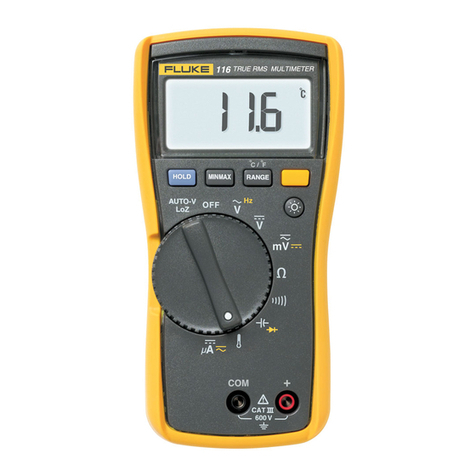
i
Table of Contents
Title Page
Introduction........................................................................................................ 1
Contacting Fluke................................................................................................ 2
Safety Information ............................................................................................. 2
Symbols ............................................................................................................. 3
Specifications..................................................................................................... 4
Getting Acquainted with the Meter.................................................................... 5
Maintenance....................................................................................................... 6
Cleaning the Meter ........................................................................................ 6
Battery Replacement ..................................................................................... 6
Performance Tests.............................................................................................. 8
Required Equipment...................................................................................... 8
Testing the Batteries ...................................................................................... 8
Testing the Display........................................................................................ 9
Display Hold Test.......................................................................................... 9
Backlight Test................................................................................................ 9
Spotlight LED Test........................................................................................ 9
Zero Test........................................................................................................ 9
Accuracy Tests .............................................................................................. 9
Calibration Adjustment...................................................................................... 11
Adjustment Subroutines ................................................................................ 11
Front Panel Operation for Adjustment .......................................................... 11
Calibration Error Messages ........................................................................... 12
Calibration Adjustment Procedure ................................................................ 12
Temperature Adjustment Procedure.............................................................. 13
Low Range Adjustment Procedure................................................................ 13
High Range Adjustment Procedure ............................................................... 13
Phase Adjustment Procedure......................................................................... 14
User Replaceable Parts ...................................................................................... 15
